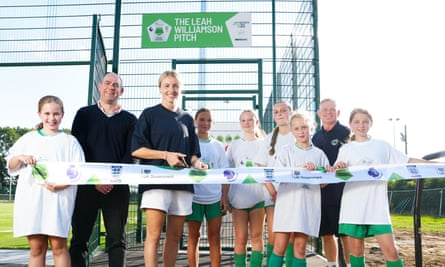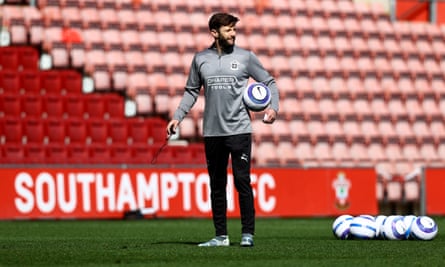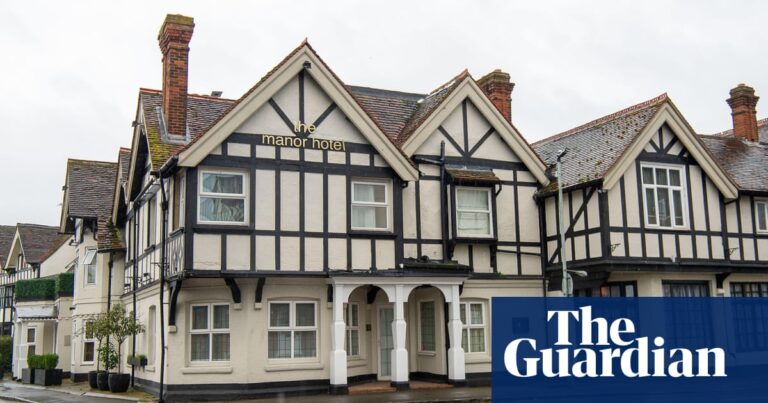As the new Women’s Super League season kicks off with a bang this weekend, it’s set to give joy to fans who are turning up to matches and watching them at home in numbers we used to only imagine. These numbers are growing at an exponential rate and these teams are inspiring a new generation of women and girls up and down the country to lace up their boots and play our national game.
It is incredible to think that more than four million women and girls now play football in England; with more females playing football than males and females play rugby. I predicted last year that women’s football in my lifetime will become the second biggest sport behind men’s football, and I stand by that claim. This rapid growth has made it clear that the grassroots system and the game needs to change just as quickly, and be ready for the fact that by 2030, one in five football teams in this country will be female.
It is with this backdrop in mind that the Premier League, the FA and the government-backed charity the Football Foundation commissioned me to conduct an independent review of its facility investment into the women’s and girls’ game. The Football Foundation has invested more than £1.1bn of its funding partners’ money to date into grassroots playing and training facilities across the country, but these resources will come under increasing pressure as a result of this growth.
The review felt like a unique opportunity to think through how football caters for this growing and changing demographic, what a welcoming facility looks like for women and girls, and how we better prioritise the needs of the women’s game to ensure they get a fair share.
It’s all a far cry from my playing days in grassroots football in Brighton, where we trained in a poorly lit park which was frightening to walk through at night (it was late, the women’s teams always got the slots that no one else wanted) and the changing facilities were grubby, a no-go area with open showers, urinals and no consideration for the needs of female players and officials.
My report, published this week, sets out a number of recommendations for the Football Foundation to build on its excellent work to date and ensure that it is best placed to meet the future needs of the women’s game. I am delighted that all my recommendations have been agreed in full by the foundation.
First, and most important, it is imperative that the foundation continues to invest in new and improved facilities; preferably at a higher rate to reflect this new demand. This is a unique opportunity to encourage a generation of girls to be active and healthy; benefiting from all those wonderful attributes of team sport; let’s not miss it by preventing them from being able to access appropriate facilities.
The report also notes the tremendous work of the Lionesses Future Fund, which will provide an investment of £30m into 30 flagship sites across the country, providing a gold standard of facilities for women and girls. One of these was the Leah Williamson Pitch, opened in her home town of Newport Pagnell, Buckinghamshire, to inspire the next generation. The lessons from these projects need to be replicated in all major facility projects as the sites provide a range of playing opportunities, priority access at key times (weekdays 6pm-9pm) and provide safe and accessible facilities with good standards of changing rooms, shower cubicles and toilets.

The report calls for new projects to be assessed against providing both competitive and recreational pathways for girls and women with the number of the priority access slots increasingly ring-fenced; starting with 15% from 2025 rising to 30% by 2030. This is huge for the women’s game, which has all too often been squeezed into late night slots not wanted by men. Anyone that receives funding will be required to publish their plans and there will be a mechanism to report concerns. This new level of transparency will prevent any applicants going back on their commitments to the women’s game after they have received the funding.
after newsletter promotion
A number of grassroots horror stories have been in the press and on social media recently, where girls teams have been thrown out of clubs and off club sites. The best known one being Thornaby FC who decided to axe their girls teams in June, leaving 100 female players without a club. The whole sorry saga and public outcry resulted in the board eventually throwing themselves on their proverbial sword and the club is now under new leadership. But it raises the question of how much more needs to be done to address the governance and culture in clubs. Would this have happened if the board was set up under best practice governance principles including gender diversity?
As more investment is directed into clubs, the FA must dial up the governance requirements for FA kite-marked clubs who want to be recipients of this money. After all, it’s not just the facilities that need to be right for women and girls; it’s the whole inclusive culture and environment too.
Kelly Simmons is a consultant for Run Communications and former director of the women’s professional game at the FA
Source: theguardian.com


















